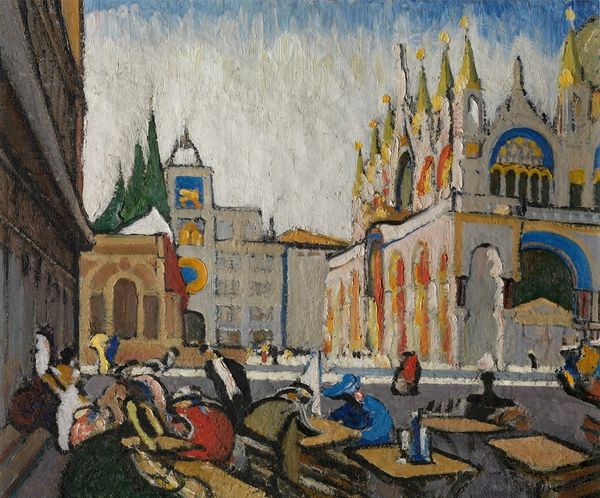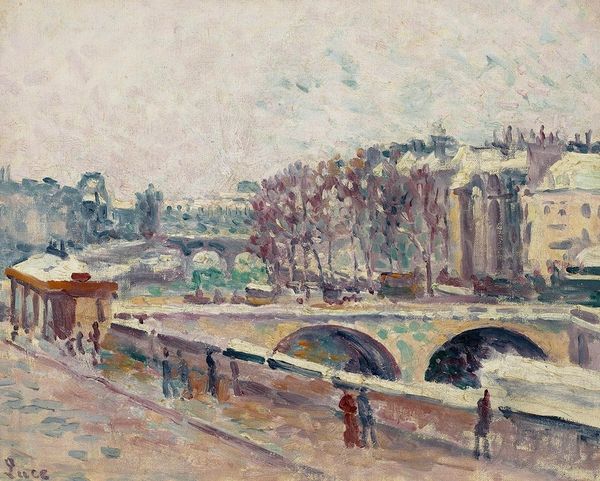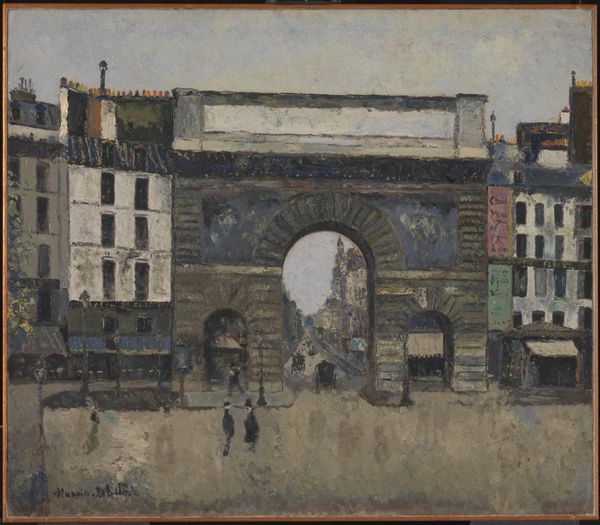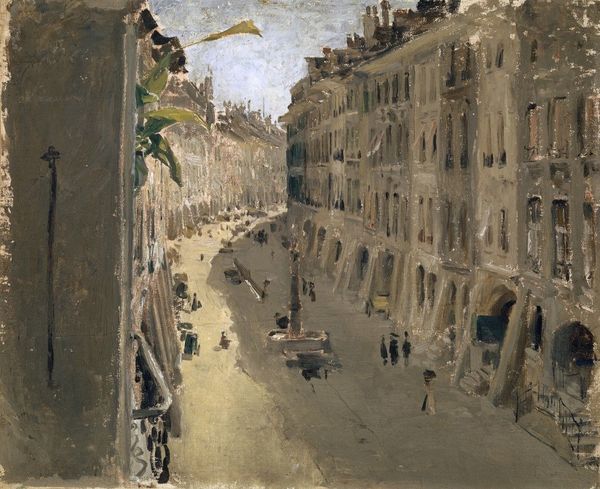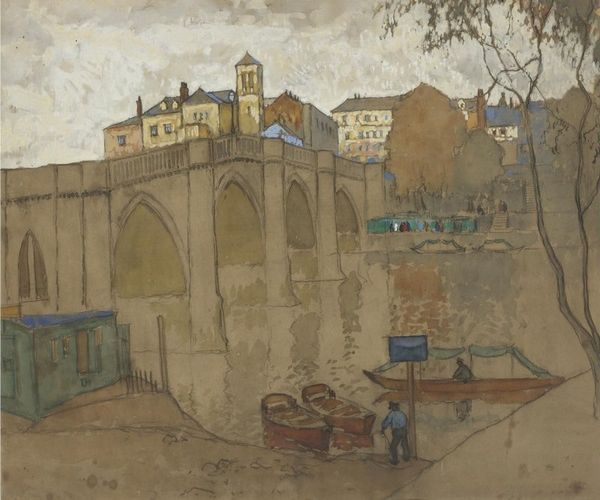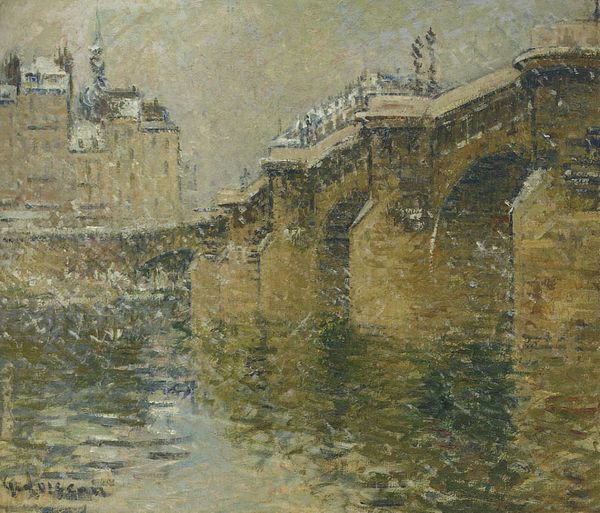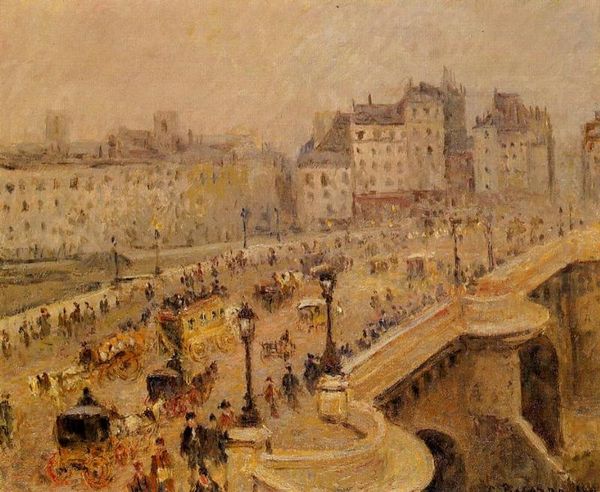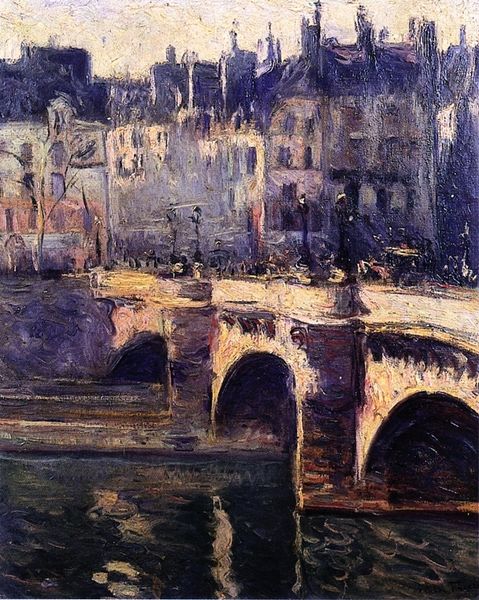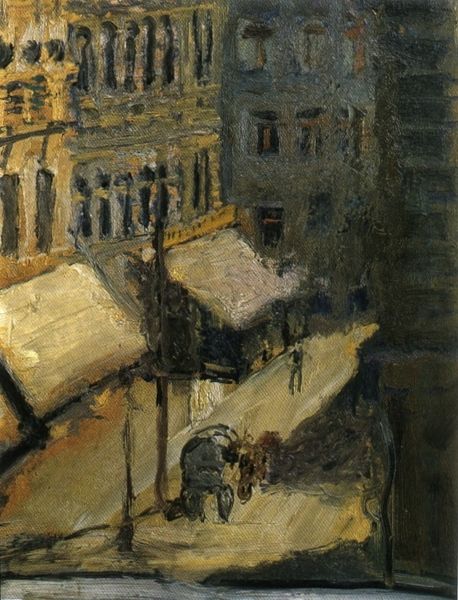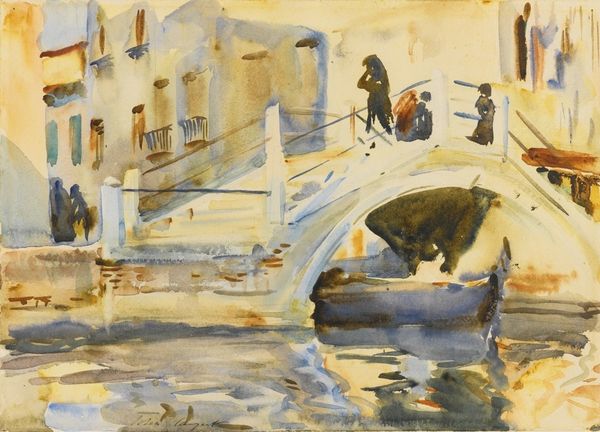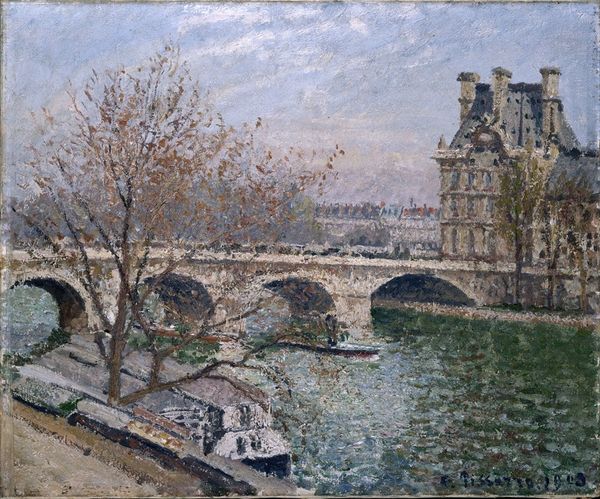
Copyright: Public Domain: Artvee
Jules Schmalzigaug captured "The Rialto Bridge in Venice" with paint, presenting a vibrant yet subtly structured composition. The artist employs a palette that balances warm earth tones with cool blues and greens, creating a visual rhythm that guides the eye across the canvas. Schmalzigaug's brushstrokes are deliberately visible, contributing to the painting's overall texture and sense of movement. The composition is divided into distinct zones: the bustling street life on the left, the imposing structure of the bridge, and the serene canal waters. This division creates a dynamic interplay between activity and stillness. Schmalzigaug seems to use the bridge as a structural device, a semiotic marker that signifies both connection and division. The architectural solidity of the bridge contrasts with the fluid, almost ephemeral quality of the water beneath, thus challenging fixed meanings. The painting invites ongoing interpretation, reminding us that art is not about fixed meanings but rather about the perpetual play of signs and forms.
Comments
No comments
Be the first to comment and join the conversation on the ultimate creative platform.
